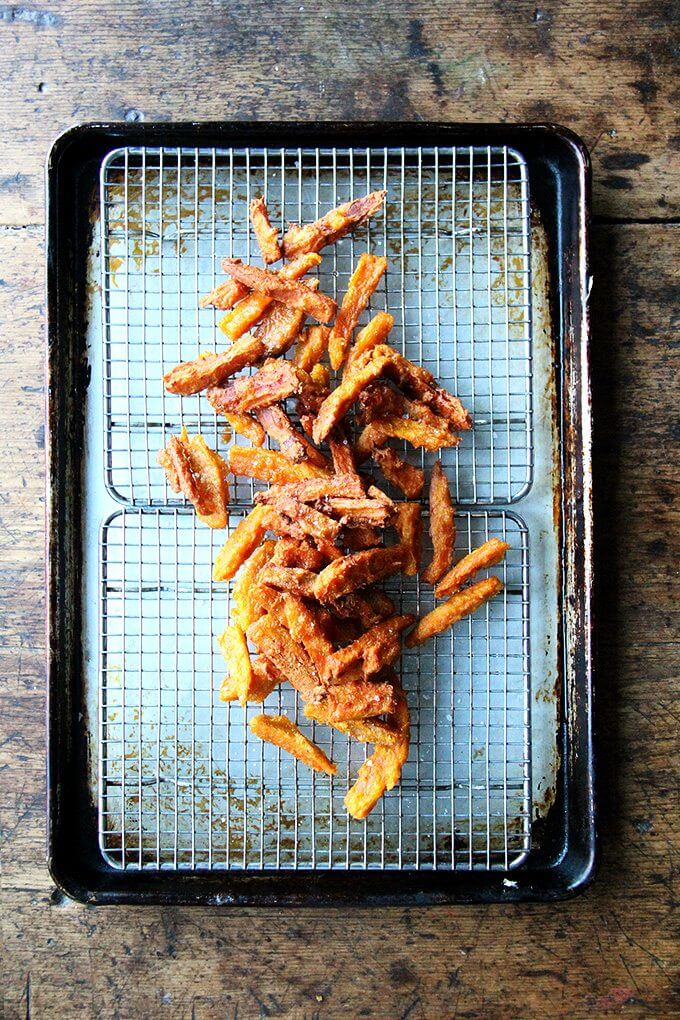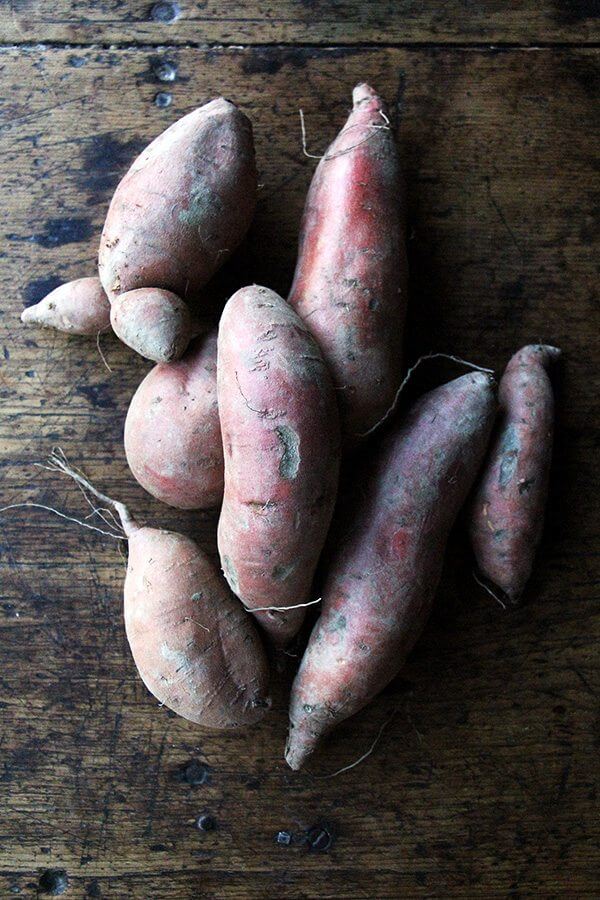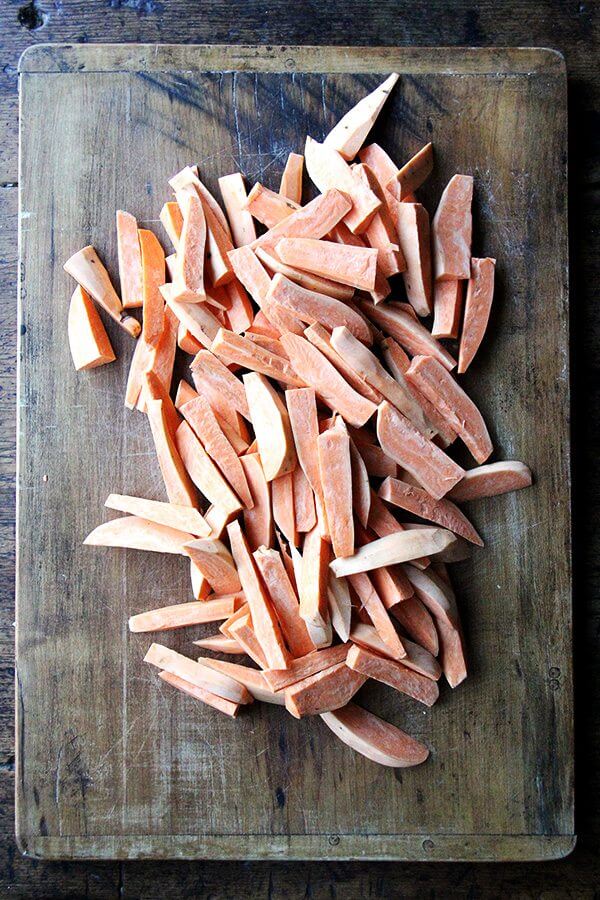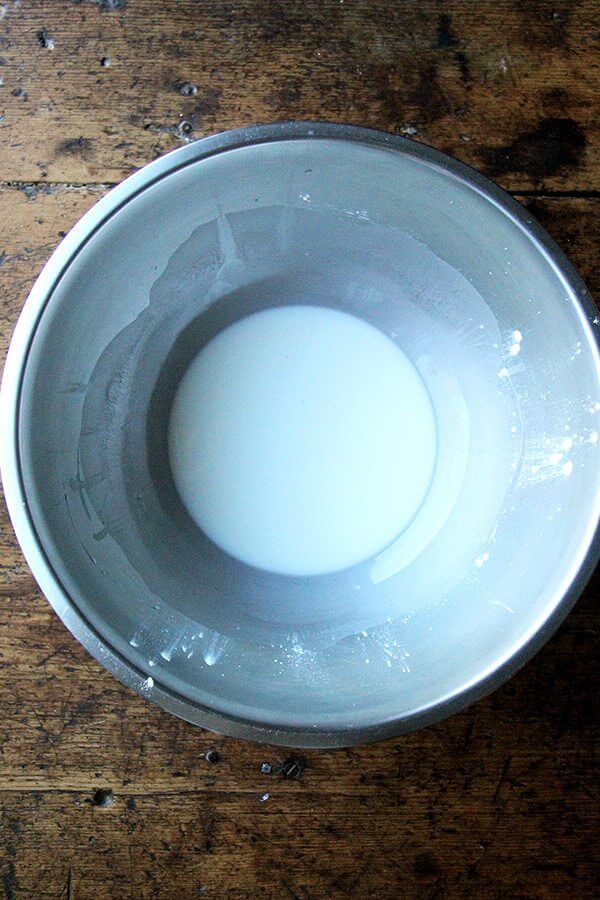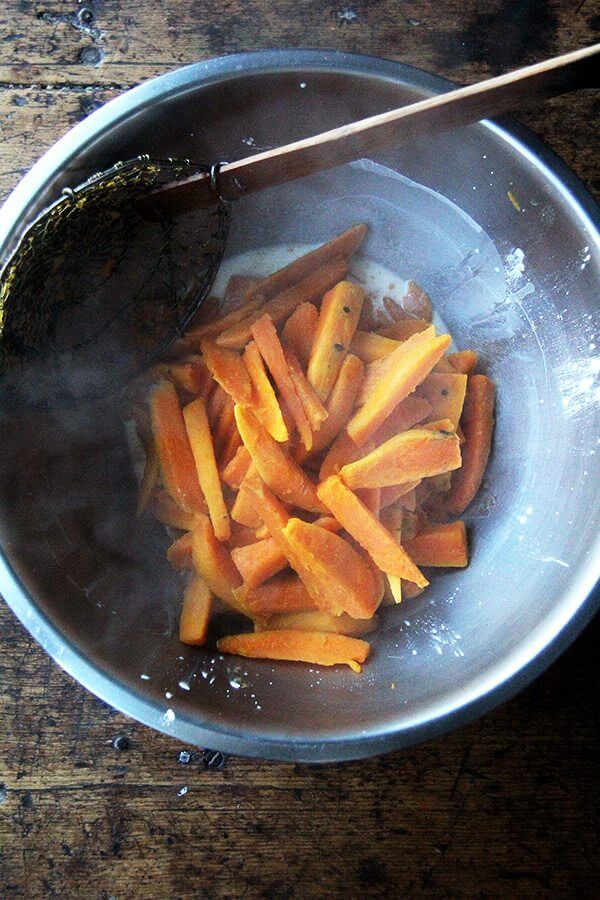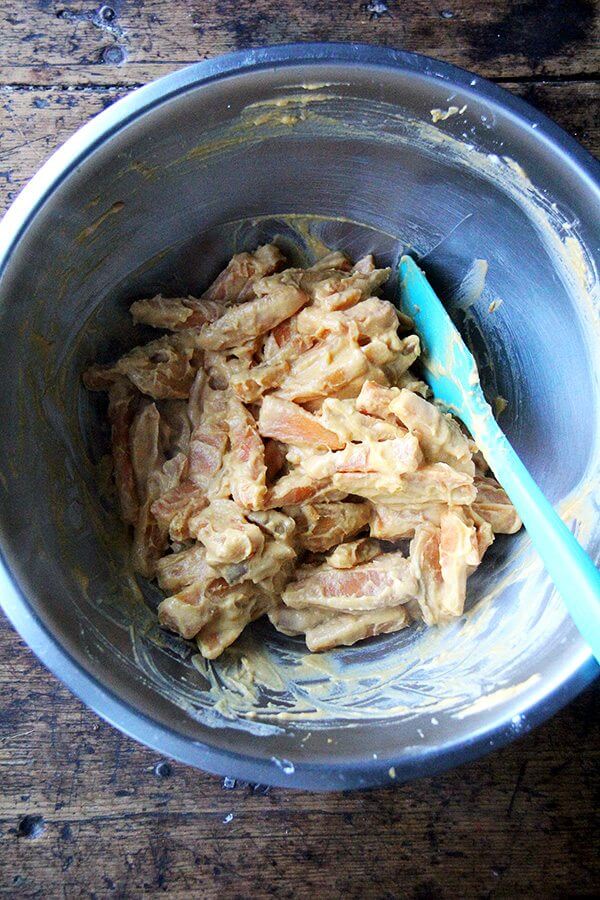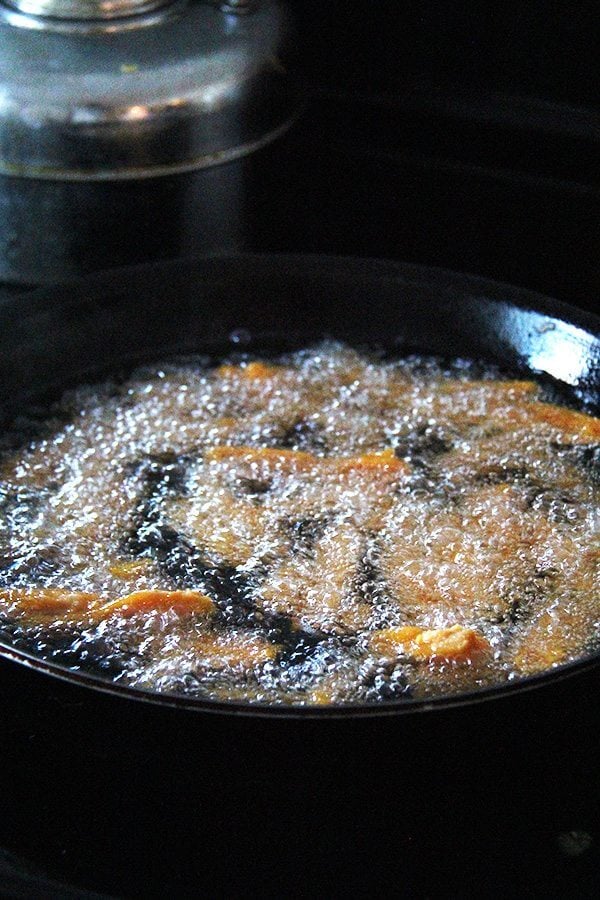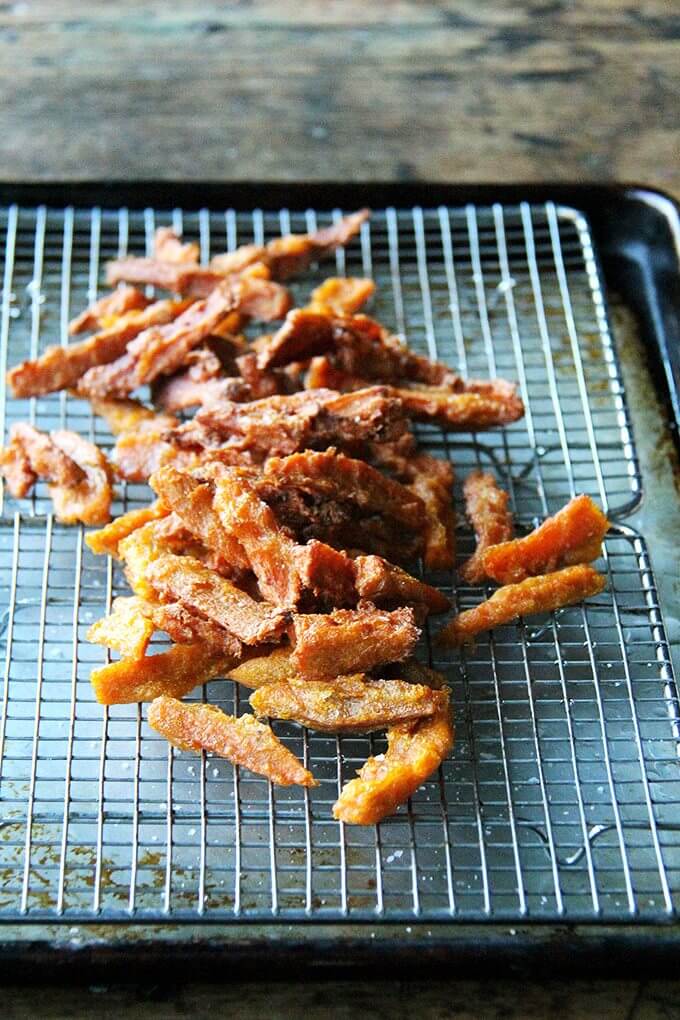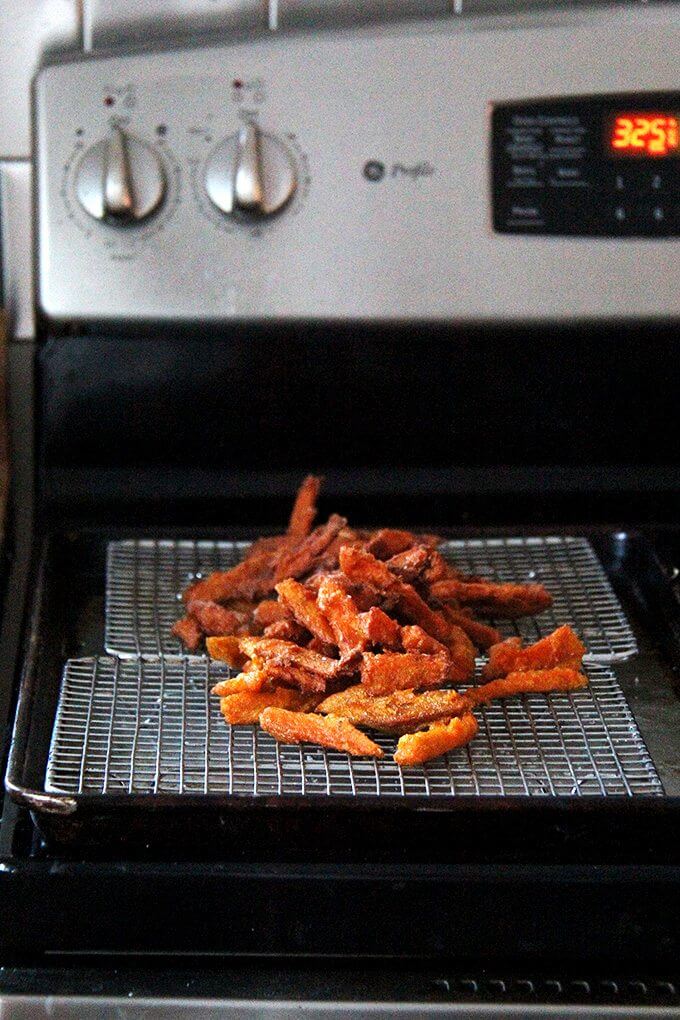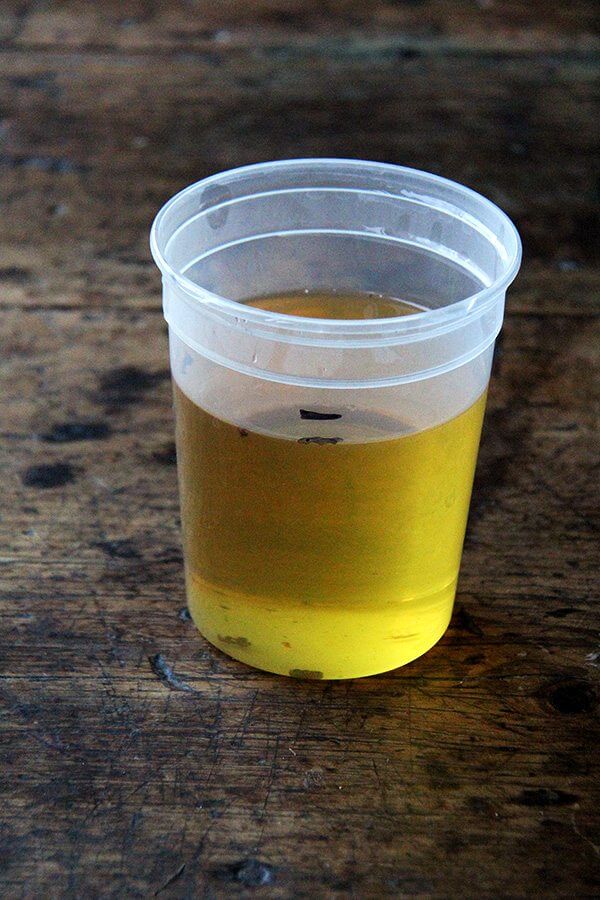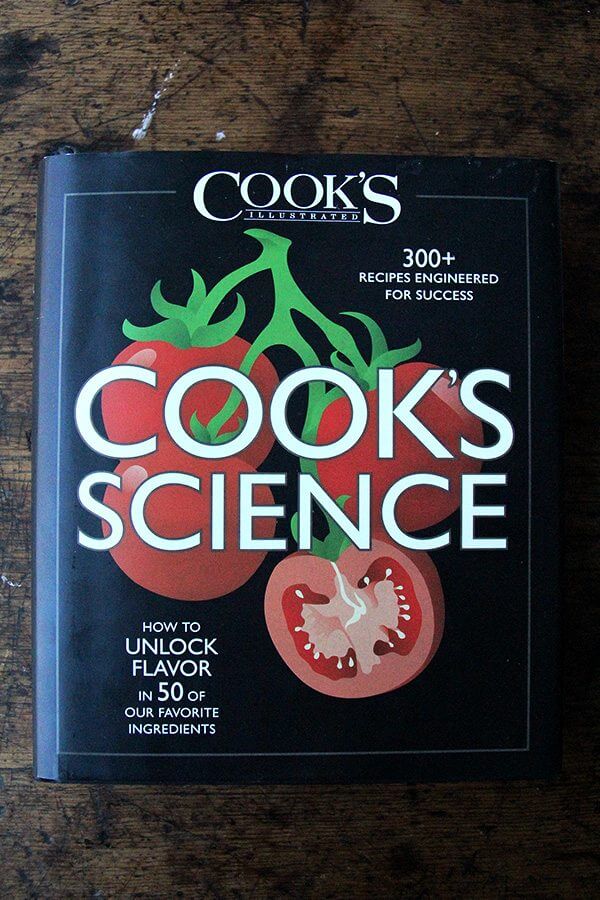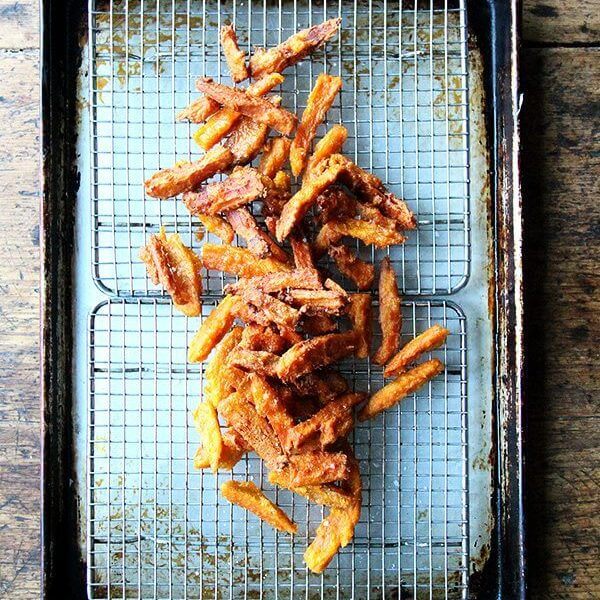I’ve long accepted that oven-baked sweet potato fries are a culinary unicorn. Oven-roasted sweet potatoes wedges with caramelized edges and creamy centers are delicious, but they’re not crispy, and they’re certainly not fries. But I’ve been reading the latest Cook’s Illustrated science-y book, Cook’s Science, and I’ve learned that the solution to making crispy sweet potato fries is not as simple as deep frying them or even deep frying them twice (first at a lower temperature, then at a higher one) as most restaurant-style French fries are prepared. Because sweet potatoes have more water, more sugar, and less starch, they need to be treated differently. They need to be cut thicker, they need some added starch, and they need to be boiled before they are deep fried. So demanding! I read with skepticism, encouraged only by the many pounds of CSA sweet potatoes on my counter desperately needing purpose.
How to Make Thick-Cut Sweet Potato Fries
Fussy? Yes. Weeknight friendly? No. Delicious? Utterly. If anything deters you from making these fries, let it be time, not fear — of fat or the frying process — because these fries, if anything, are less greasy than roasted sweet potatoes wedges, and they are completely irresistible. I did a very unscientific before-and-after weighing/measuring of the oil (see photo below), which did not account for any of the oil that dripped through the cooling rack or that clung to the slotted spoon or spattered out while cooking, etc. — it amounted to about a 1/4 cup. As for the deep frying, which is not something I am ever very comfortable doing, there’s nothing tricky about it. Even without a deep-fry thermometer, you can gauge the temperature of the oil by dropping in a wedge and observing how quickly or not it fizzles, and it’s easy to adjust the temperature to keep it bubbling at an appropriate rate. Save this for one for a night when you have some time, but know, too, that you can absolutely fry the wedges ahead of time and keep them warm in a 200ºF oven until serving. I did this when my parents were in town last weekend, and they were every bit as delicious warm from the oven as hot from the fryer. I am really enjoying Cook’s Science, by the way. The subtitle is “How to Unlock Flavor in 50 of our Favorite Ingredients” — think quinoa, kale, lentils, pork shoulder, red wine, canned white beans, flank steak, olive oil, almonds — and each chapter focuses on a single ingredient. This recipe and its unintuitive process is a great reflection of the subtitle/book but perhaps not the most accurate reflection of the over 300 recipes. There are lots of simple recipes, too, like gemelli with kale, caramelized onions, and bacon, which was delicious, and overnight kale salad with roasted sweet potatoes and pomegranates (also delicious), and many others I have bookmarked: savory corn muffins, tofu banh mi sandwiches, cold-oven pound cake, and Seville orange marmalade. Earlier this year, I wrote about another Cook’s Illustrated book, The Science of Good Cooking, which taught me to brine (not just soak) my beans before cooking them, and then turned me into bean-cooking-and-eating machine. More than the recipes, it’s learning techniques like that one and this one here that make me value these books so much. For the science-minded (or not) cook, this would be a great gift. Hope all of your holiday preparations are going well!
If you’re looking for a stocking stuffer, look no further: Kuhn Rikon peelers: This is the slurry: 1/2 cup cornstarch mixed with 1/2 cup cold water: Boiled sweet potato wedges meet the slurry: Wedges coated in starchy paste:
It’s shocking how little oil is soaked up in the process of frying these. By my unscientific calculations, it was about 1/4 cup: Cook’s Science: 4.8 from 4 reviews If your sweet potatoes are shorter than 4 inches in length, do not cut the wedges crosswise. They prefer peanut oil for frying, but vegetable oil may be used instead. Leftover frying oil may be saved for further use; strain the cooled oil into an airtight container and store it in a cool, dark place for up to one month or in the freezer for up to two months. Serve with fry sauce if you wish: Stir together 6 tablespoon mayonnaise, 1 tablespoon Asian chili-garlic sauce, and 2 teaspoons vinegar. This is delicious, but totally optional—the fries are so good on their own. KEY STEPS: BLANCH:Blanching the wedges helps ensure that their interiors fully cook and turn creamy when fried. Adding baking soda to the water makes them tacky on the outside. COAT:The cornstarch slurry stays put thanks in part to the parcooked wedges’ tacky exteriors, and it crisps up beautifully in the hot oil. FRY:Frying the wedges in a nonstick skillet prevents them from sticking to the bottom of the pan. The shallow vessel also makes using far less oil possible.
